Creating a Citified Community on the National Mall

In reflecting on our experiences at the 2012 Folklife Festival, the team of interns from the Citified: Arts and Creativity East of the Anacostia River program kept coming back to the concept of community. For us, the notion of community includes working together towards a common goal, bonding over shared experiences, forming ideas through different perspectives, and creating a comfortable environment. Throughout our two weeks spent on the National Mall, we experienced firsthand all of these aspects of community as they developed within the Citified program.
Before the festival began, participating artists were already excited to bring east-of-the-river experiences, history, and culture to the National Mall and to increase the visibility of and appreciation for this often-misrepresented and overlooked hub of creativity. We were especially moved by the encouraging atmosphere the participating artists created at their pre-festival orientation. Although many participants were meeting for the first time, they already exhibited a sense of support and connection.
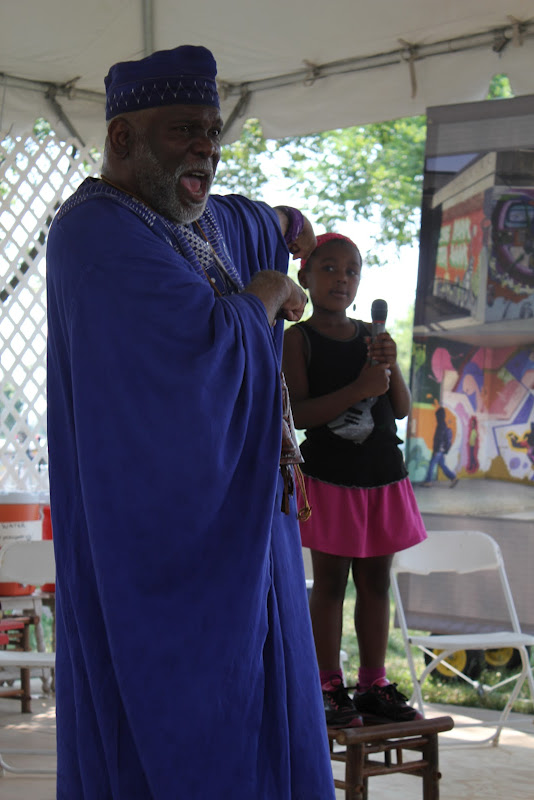
We noticed that many of the participating artists shared the experience of growing up in an area where overcoming obstacles related to racial and economic inequities was a part of daily life, and they are drawn to art and creativity as means for engaging and empowering their communities.
The Taratibu Youth Association, for example, prides itself on engendering self-respect among their members through dance and song. One of our favorite songs was “Black Girls,” a piece that responds to misconceptions about African American names and encourages women to embrace their names and heritage.
Although the participating artists had myriad talents and passions, they all hold similar values when it comes to art, education, and community engagement. For example, master storyteller Baba-C uses the art of storytelling to share messages about self-esteem and heritage; Melvin Deal, the founding director of African Heritage Dancers and Drummers, uses drumming and movement to express similar messages about self-respect and cultural background. Tattoo artist Charles “Coco” Bayron discussed the importance of tattoos to personal identity construction by telling a story of an individual’s life and heritage.
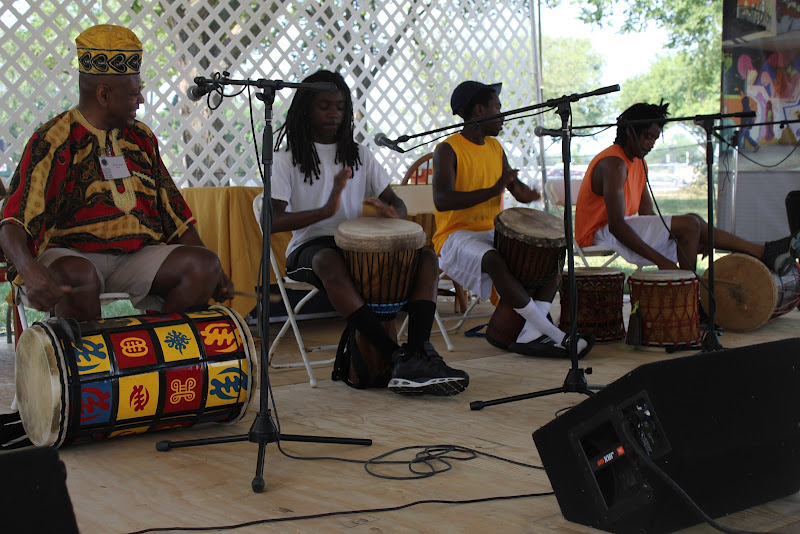
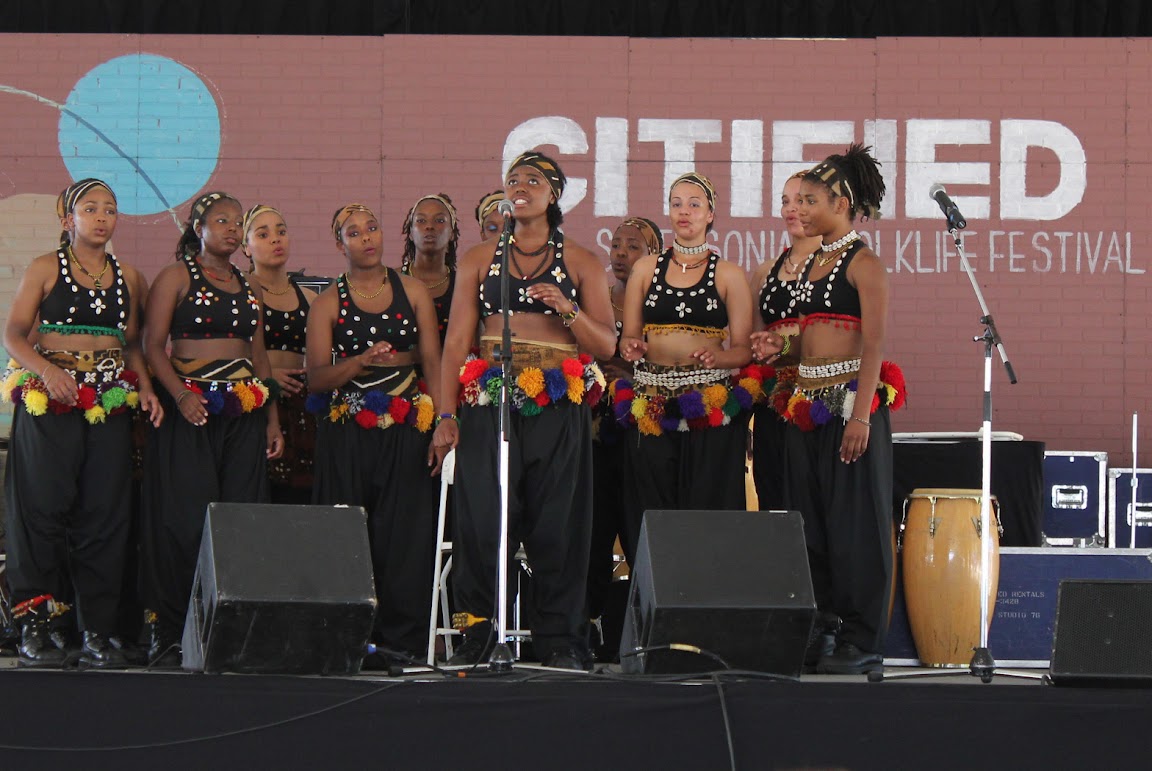
Over the course of the Festival, the Citified staff, participating artists, and festival-goers collaborated on the creation of a comfortable and nurturing environment. The artists supported one another, which created a strong sense of camaraderie. For example, Baba-C made an effort to learn from different artists, contribute to the discussions, and intermittently exclaim, “Yebo!” (“yes!” in Zulu) in encouragement.
Easy-going even in extreme heat, the Iverson Mall Line Dancers motivated audiences to get up and participate in popular dances like the “Wobble” and “Cupid Shuffle.” Albus Cavus, a muralist collective, were a continuous force in strengthening the Citified community and enlivening the program site through ongoing demonstrations by artists and by encouraging visitors to participate in creating murals. While some parents were worried their children would interfere with the artists’ work, Albus Cavus strongly encouraged the children and all visitors to contribute.
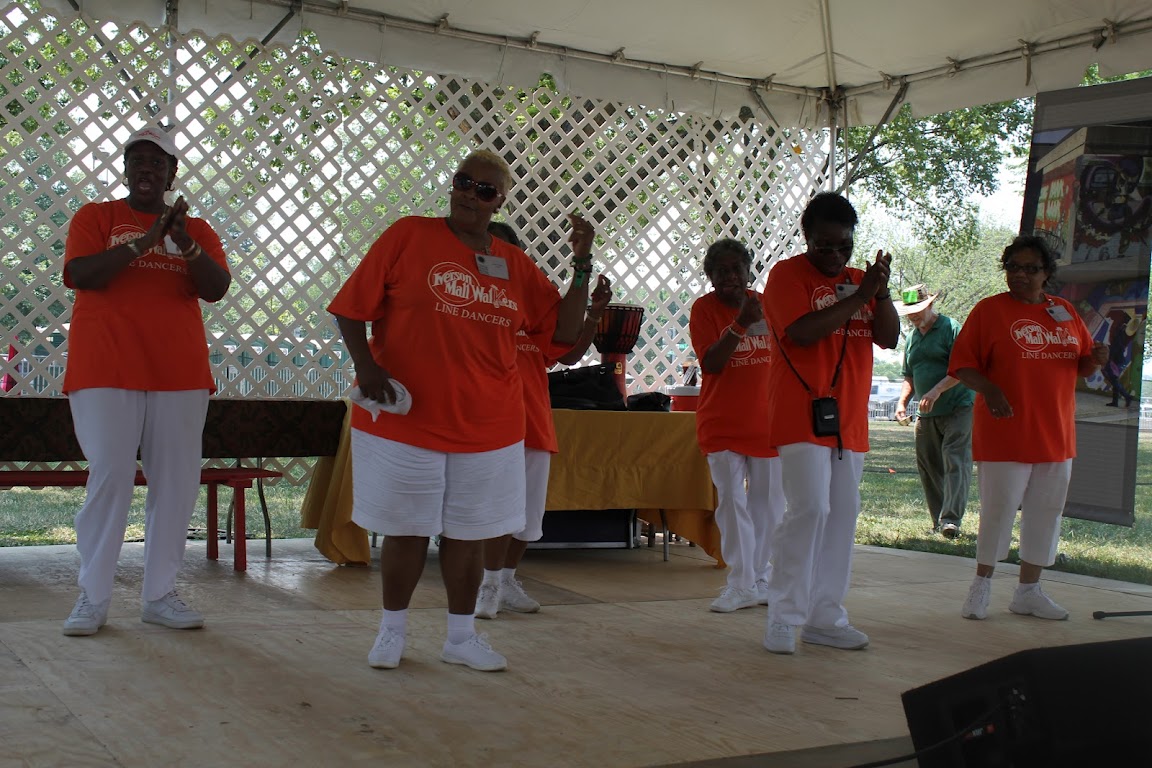
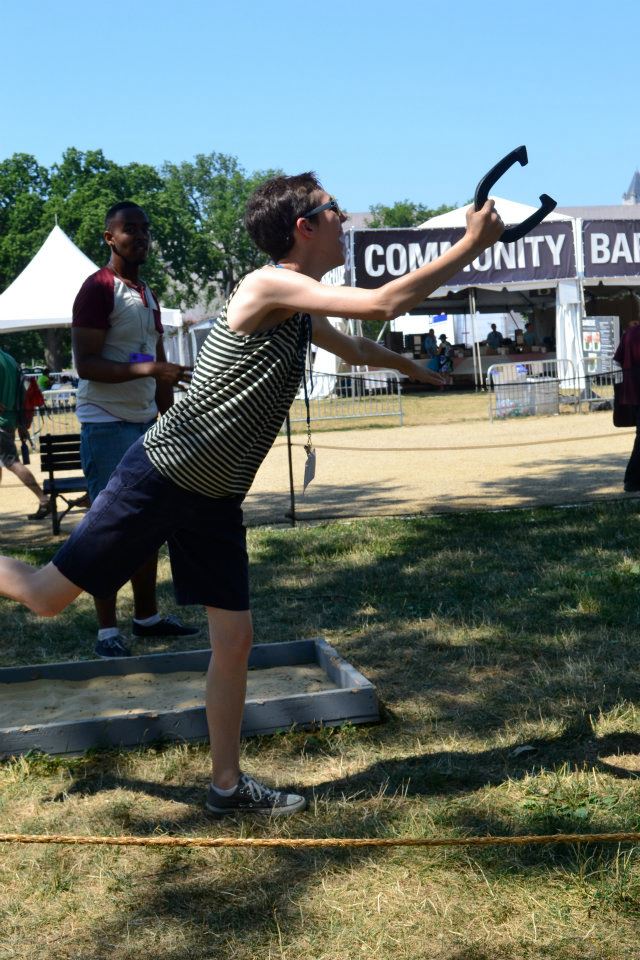
Also scattered through the program site were several other activities and features designed to make people feel at home. Chess, checkers, dominos, horseshoes, and a sprinkler (for the extra hot days) brought artist and festival-goers together for informal interaction and fun. Playing games, such as dominos and horseshoes, on the National Mall was a unique experience indeed. Staff, interns, and participants all got involved, and in this way, had the opportunity to experience the festival as visitors did.
Additionally, artists enjoyed complimentary homemade mambo sauce, a favorite D.C. condiment, which was available in the Citified tents to make artists feel more at home, while simultaneously enhancing the flavor of the Citified program.
The Citified Chuck Brown Tribute Day on July 7 especially solidified a sense of community among artists, visitors, and staff/interns/volunteers through shared celebration of the late “Godfather of Go-Go,” Chuck Brown. Throughout the festival, many participants referenced the influence that Chuck Brown has had on their art. Jay Coleman painted a portrait of Chuck, collaborating with visitors to create the final product.
On the Chuck Brown Tribute Day, the Good Hope and Naylor Corner tent hosted various narrative sessions and discussions on go-go, including a talk with past members of the Chuck Brown Band. During “Go-Go Then/Go-Go Now,” a narrative session about the history of go-go music and culture, participant Christylez Bacon shared his human beat-boxing talent to illustrate an example of the go-go beats being discussed.
Despite the 105-degree weather, an hour of go-go fitness drew a huge crowd that moved their bodies and exercised to Chuck Brown songs and other go-go hits. During the performances of go-go music on the main Panorama Room stage, members of the Taratibu Youth Association and the African Heritage Dancers and Drummers were among the most energetic dancers in the audience. Go-go music brought together in celebration a huge east-of-the-river contingent to the Festival, as well as many other Washingtonians and additional visitors.

By the end of the ten-day festival, these instances of camaraderie all experienced in a physical space on the National Mall created the community atmosphere that was felt. The creative people from East of the Anacostia River, Citified staff, interns, and presenters, and festival visitors talked together, listened to and supported each other, experimented with new ideas, played music, danced, made art, worked, ate at the community barbeque and drank smoothies, enjoyed each other’s company, laughed, and relaxed together. To us, that is community. It may have been a temporary community during the two-week festival, but we hope that the artists, staff, and festival visitors will bring the experience and feeling of community home with them and continue the atmosphere of the festival in their own communities.
Kate Aebischer, Malik Stefan Stevenson, and Jennie Terman were interns for the 2012 Smithsonian Folklife Festival program Citified: Arts and Creativity East of the Anacostia River. Aebischer is studying anthropology at The College of New Jersey. Stevenson is studying Spanish Literature at Xavier University of Louisiana. Terman is a graduate student at the University of Maryland where she studies ethnomusicology and is a teaching assistant for a course, The Impact of Music on Life.

